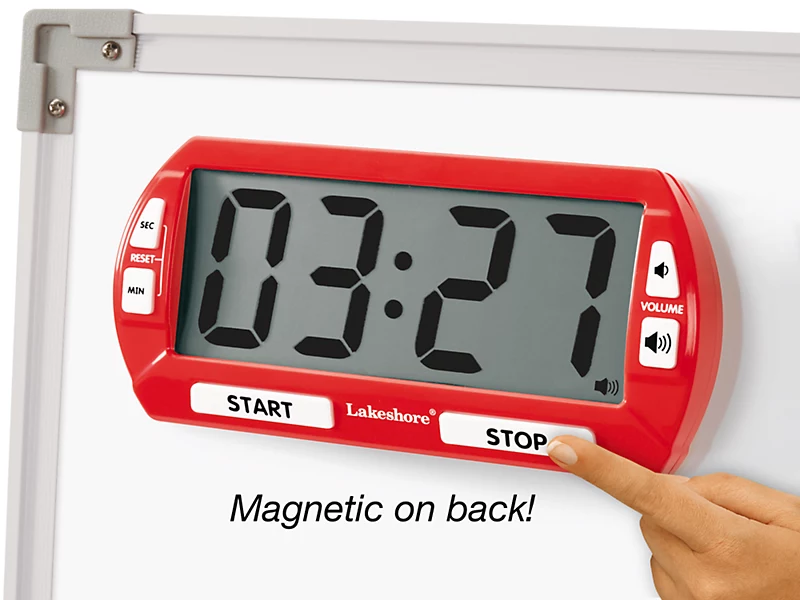In today’s fast-paced world, time management has become an essential life skill. It’s no different for students who face a constant barrage of distractions and competing demands on their time. That’s why setting a classroom timer can be an effective strategy for teachers to help their students learn and develop this critical skill.
Classroom timers are also effective tools for classroom management, to help teachers create a conducive and well-managed learning environment where students can thrive. Beyond its conventional role in tracking time, a well-chosen timer can significantly contribute to a well-managed classroom, helping both educators and students stay organized, focused, and engaged.

Join us as we explore 5 main timer variants you can apply in your classroom for different scenarios. By harnessing the power of technology and time, educators can create an environment where every minute is optimized for meaningful learning experiences.
Why Time Management is Crucial to Student Learning
Time management is crucial in the classroom because it helps students learn how to manage their time effectively, a skill that they can apply to all aspects of their lives. However, it can be challenging to teach time management skills in a way that is engaging and effective. That’s where timers come in – by using timers in the classroom, you can make time management more tangible and accessible to your students.
In addition to teaching students the skill of time management, effective time management in the classroom can lead to a more productive learning environment. When students know how to manage their time effectively, they can complete tasks efficiently, leaving more time for additional learning opportunities. This can ultimately lead to improved academic performance and a greater sense of accomplishment for students.
How Classroom Timers Improve Student Learning
Using timers in the classroom can have numerous benefits that improve student learning. Here are some ways classroom timers can enhance your students’ academic performance:
1. Time Perception
Timers can help students develop a better sense of time perception by providing a visual and auditory cue that indicates how much time is left for a task. This can help students become more aware of the passage of time, and learn how to plan and prioritize their work more effectively.
2. Encourages focus and time management
By setting a timer for a specific task or activity, students are more likely to stay focused and complete the task within the given time frame. This helps them develop good time management skills and prevents procrastination.
3. Increases motivation and engagement
Timers can be used to create a sense of urgency and competition, which motivates students to work efficiently and stay engaged. Students often find timed activities more exciting and enjoyable than those without a time limit.
4. Helps with transitions between activities
Transitions between activities can be challenging for students, especially those with ADHD or other attention disorders. Timers can be used to signal the end of one activity and the start of another, helping students smoothly transition between tasks without disrupting the flow of the class.
5. Builds independence and responsibility
Timers can be a powerful motivator for students, as they create a sense of urgency and competition against time. By setting a timer, students can challenge themselves to complete tasks within a specific time frame, which can help them stay focused and engaged in their work, thereby fostering a sense of independence and responsibility.
6. Provides a sense of accomplishment
When students complete a task within the allotted time, they feel a sense of accomplishment and pride in their work. This can boost their confidence and encourage them to tackle more challenging tasks in the future.
As teachers, it is our duty to ensure that these benefits of using a classroom timer is well optimised. Here are 10 effective and proven ways you can use a timer in the classroom to effectively enhance student learning.
5 Main Kinds of Classroom Timers (And Best Examples)
There are many kinds of timers you can implement into your classroom! From physical to online applications, and many price points (including free!) you can choose from a wide range that will best suit your classroom and teaching style.
1. Physical Timers
The first, and most commonly pictured classroom timer is a traditional timer that you can physically set on your desk, on a whiteboard shelf, or stick to a wall – magnetic or adhesive. Ideally choose a large timer, so students can see it!
Benefits of using a physical timer:
- Tangible presence helps students grasp the concept of time better.
- Provides a clear visual cue for time management.
- Ideal for activities requiring movement or group transitions.
2. Web-based Timers or Timer Apps
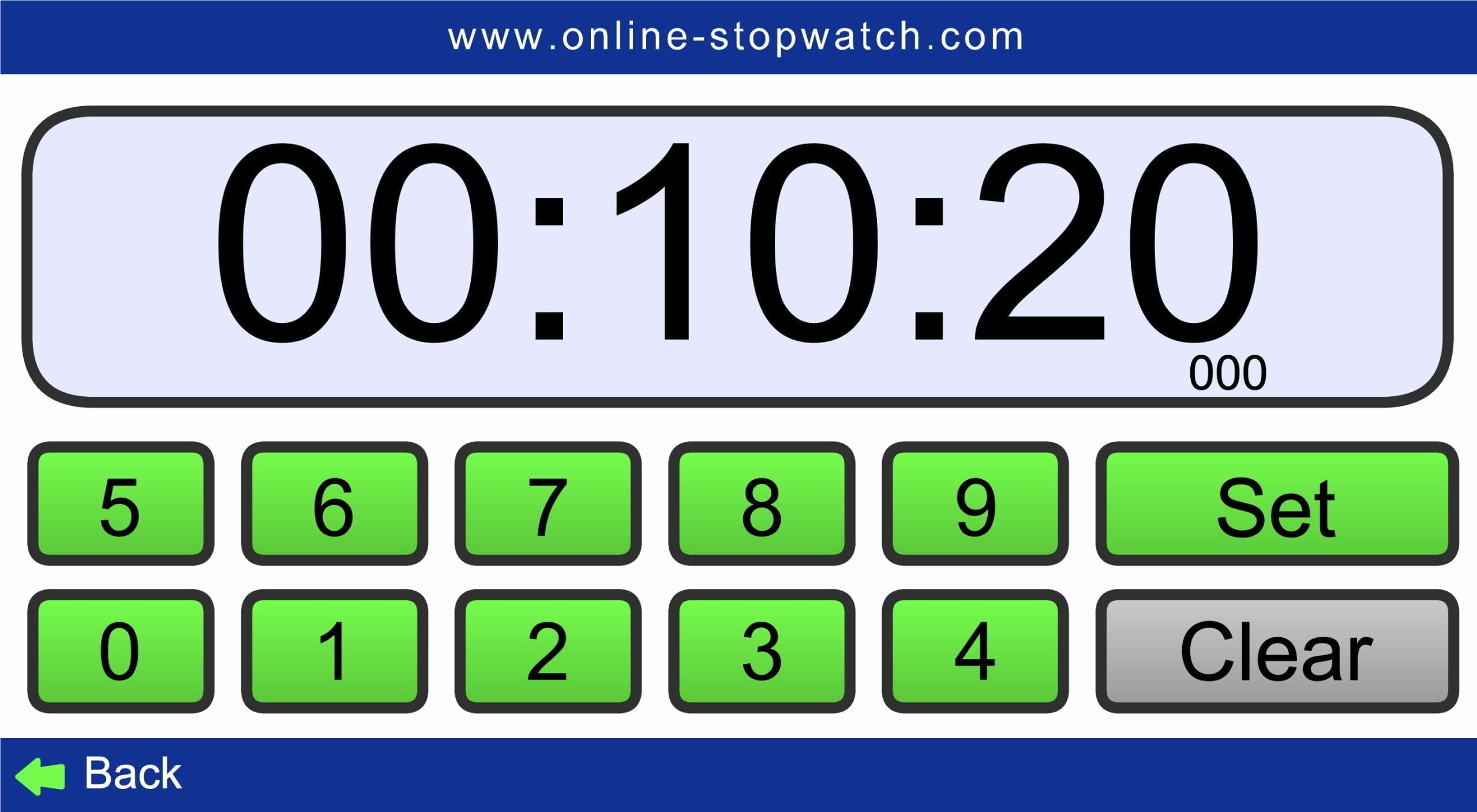
A cheaper option and potentially more convenient is an online or web-based timer! Thanks to EdTech, there are many online timer tools available, paid and free, which is accessible from any device with an internet connection.
Benefits of using a web-based timer:
- Accessible and easy to use on various devices.
- Can provide additional features like customizable alerts and countdown options.
- Useful for both in-person and online classes.
Web-based application timers we recommend: Google Timer, Online-Stopwatch, Classtools Timer, Stopwatch-Timers, timerq and Online Timer.
3. PowerPoint Timers
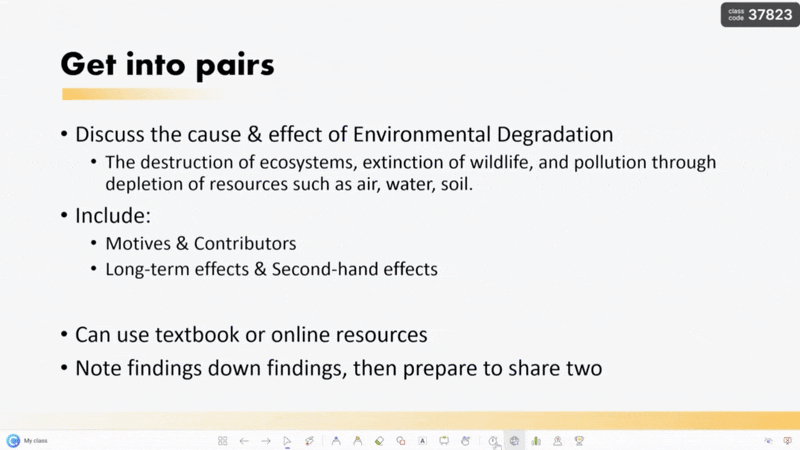
PowerPoint Timers serve as invaluable companions for users of Microsoft PowerPoint. While PowerPoint itself lacks a native timer, add-ins such as ClassPoint seamlessly incorporate timers and stopwatches directly within PowerPoint. This feature is readily accessible during any live presentation. The best part? You can run the timer simultaneously while navigating between slides! With ClassPoint’s Timer & Stopwatch feature, easily incorporate timers into your lessons without the need for additional tools or resources. Learn more about how to run a ClassPoint Timer in PowerPoint!
Other PowerPoint Timer Add-Ins we recommend: Breaktime and EasyTimer.
Benefits of using a PowerPoint timer:
- Embedded directly into PowerPoint presentation slides.
- Enhances engagement during lectures and presentations.
- Enables seamless coordination between content and timing.
4. Visual Timers
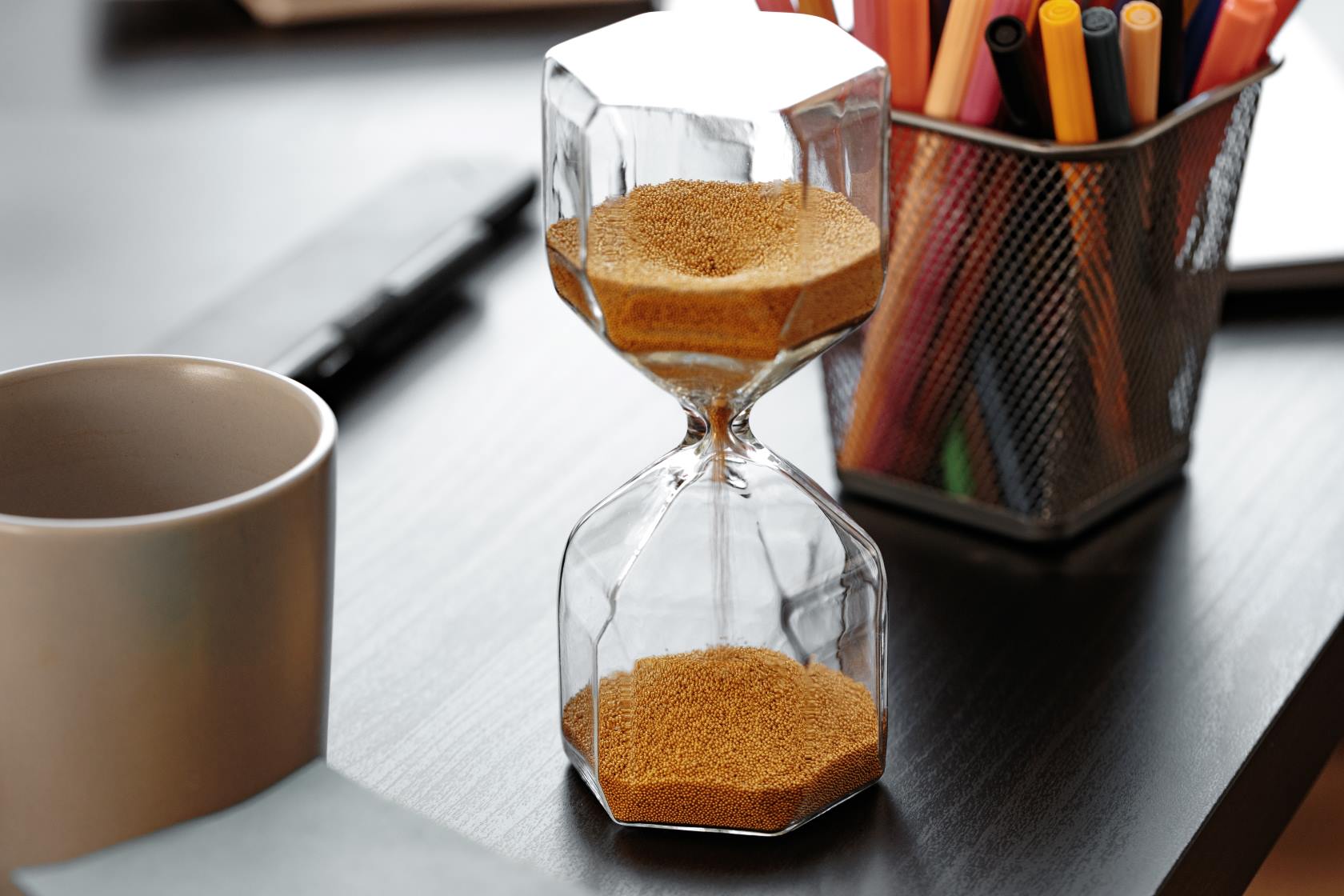
A visual timer can actually be digital or physical, however it is a specific type of timer that shows the movement of time through visual signals instead of counting time. A main example of this is a sand timer where sand falls in an hourglass. Visual timers can help students conceptualize time in a visual way, and it is especially helpful for students with autism and ADHD.
Benefits of using a visual timer:
- Appeals to students with various learning styles, including visual and neurodiverse learners.
- Provides a clear, dynamic visual representation of time passing.
- Helpful for managing tasks and transitions for students who struggle with traditional timers.
5. Video Timers (a.k.a Fun Classroom Timers)
As the term suggests, a video timer is a dynamic visual representation presented in the format of a video. It is often used to enhance presentations, online classes, or instructional videos by visually representing the passage of time, making it easier for viewers to keep track of time in all kinds of scenarios! The major downside with this kind of timer is its lack of customisability.
Nonetheless, video timers can infuse a sense of fun and entertainment to lighten up the classroom atmosphere, as seen in the Baby Yoda video timer below:
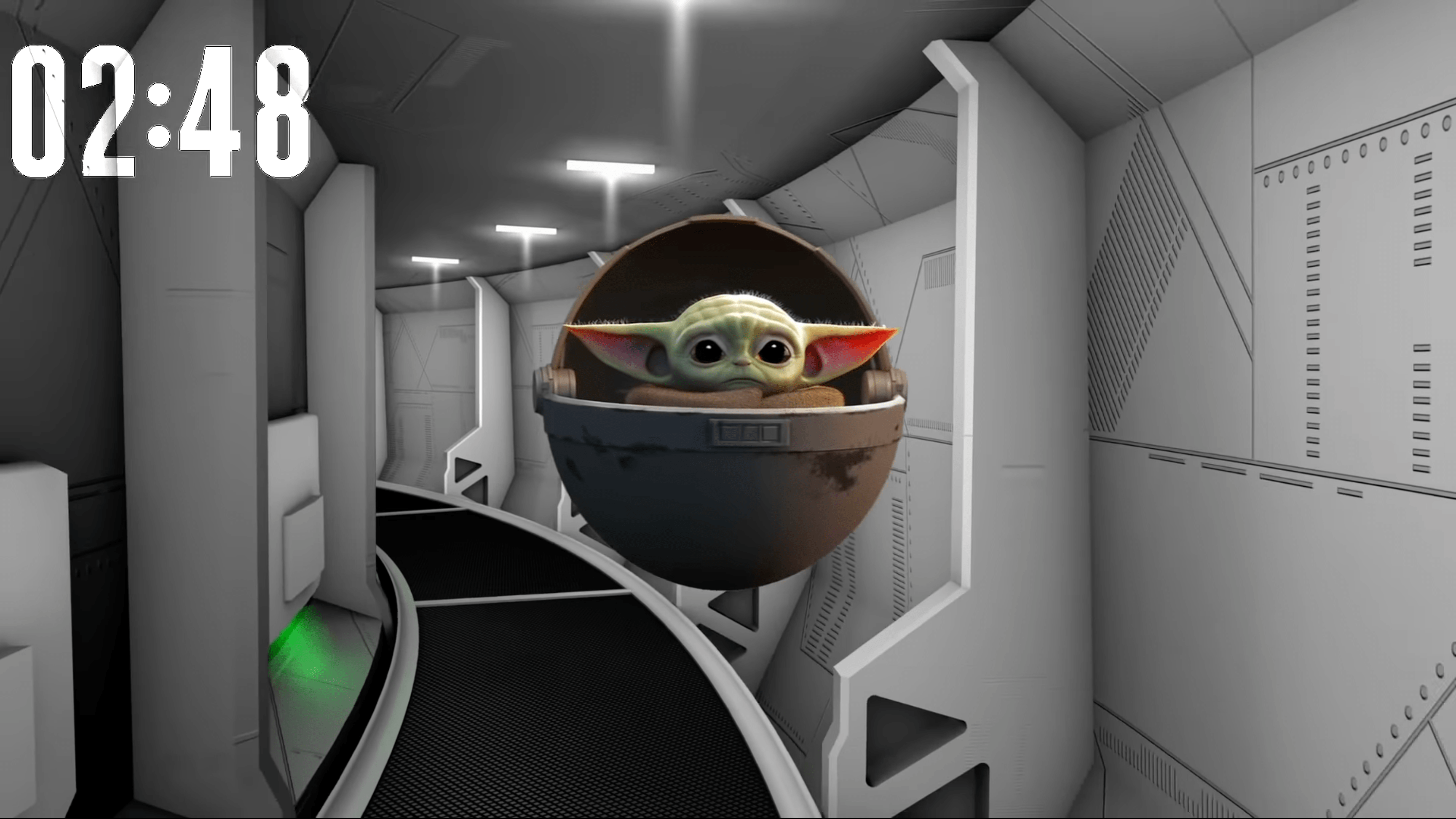
Benefits of using a video timer:
- Engages visual and auditory learners effectively.
- Ideal for incorporating timed activities into multimedia presentations.
- Enhances engagement and understanding of time-bound concepts.
Conclusion
In conclusion, classroom timers are simple yet powerful tools that teachers can use to enhance their classroom activities and routines.
The array of classroom timers she shared empowers educators to cultivate effective time management skills in students while fostering an engaging learning atmosphere. Whether through tangible physical timers, adaptive visual timers, seamlessly integrated PowerPoint timers, flexible web-based options, or the dynamic appeal of video timers, each variant offers a unique contribution.
If you regularly present using PowerPoint, we recommend trying ClassPoint’s PowerPoint timer. This way, you can seamlessly enjoy the best of both worlds: teaching and time management, right inside PowerPoint!

